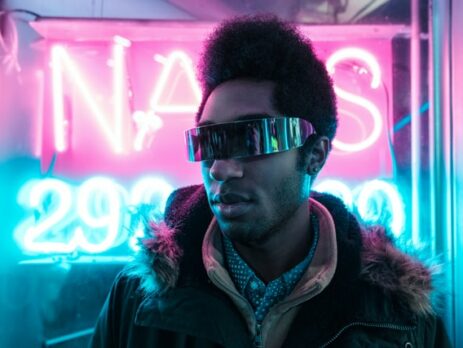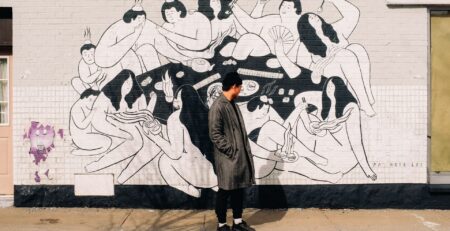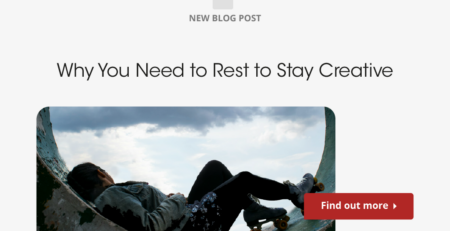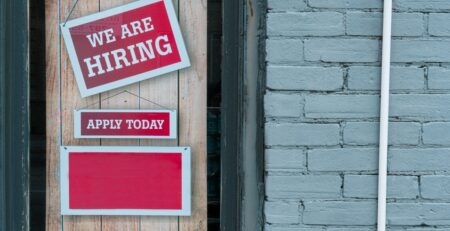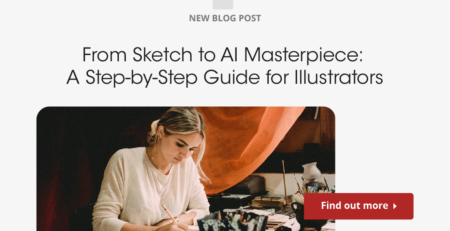5 Strategies to Future-Proof Your Creative Career
What’s the best way for creatives to ensure job security? Tons of different changes hit just about every industry constantly. It could be sudden imbalances in the labor market or a huge technological shift – creatives need to be wary of such changes if they want to make sure they can still find work in a new industry landscape.
There may not be one single trick for future-proofing your creative career. But there are some things you can do on a regular basis to make sure you’re flexible enough to make a big career jump and maintain your competitive edge no matter what comes down the pipeline.
Read on to find out everything you need to know about how creative work is likely to shift and 5 really simple strategies that will make you more versatile and future-proof your creative career.
What is Future-Proofing?
Creatives have to stay on their toes if they want to stay competitive and have a market for their particular skill set. But if there’s anything we learned at the start of the 2020s, it’s that the future can be entirely unpredictable.
Future-proofing your creative career doesn’t necessarily mean that you’ll never be unemployed again. The goal is to diversify your knowledge and build on your existing awareness of your current and related job fields so you already know what to do when a big change comes.
It’s already clear to creatives who have been in the industry for long enough that skill-building is a constant process. You’re unlikely to ever feel like you’ve arrived and know all there is to know – and if you do, don’t rest on your laurels. A job that lacks stimulation may lead to stagnation in your creative output.
The way you future-proof may vary from someone else’s strategies. It depends on your field, talent, and career goals.
Future-Proofing Your Career
Just because the future can hold lots of surprises doesn’t mean you have to take it passively. You can still account for your career ambitions when you prepare for the future. In fact, it’s probably best if you do.
If we were all to try and future-proof the same way, it would create a legion of creatives with the same or similar skills. That’s a death wish on the job market. Rather, you need to cater to your personal tastes and desires.
For example, if you got into graphic design to try and make real and digital spaces more navigable for users, you can future-proof your creative career by staying on the cutting edge of styles and UI interfaces for apps and websites. You don’t have to abandon that initial goal to give yourself a greater chance at job security.

Who Knows What the Future Holds?
Although we can’t see what life has in store for us, we can at least use past experience to illuminate some likely scenarios. If you just landed your first creative job, you might not have as much experience to rely on. Creatives are especially fortunate to be part of a community that’s willing to share insights with one another.
It’s probably not great advice to tell readers to trust every so-called creative who has advice about how you can future-proof your creative career. Some wily “experts” might be promising tactics for job security when all they really have to offer is a fancy seminar with a high price tag attached.
But the internet is full of people with experience in a variety of creative fields who have been through the seismic changes of previous decades. It’s never too early to take advantage of hard-earned wisdom from seasoned professionals and incorporate that advice into your career preparations.
Most importantly, these preparations should be a long-term strategy. Going back to school or earning a certificate is great and quite likely to help you find work the next time you need to, but that shouldn’t be your entire plan to future-proof your creative career.
Foster a Culture of Learning
Whether it’s on a professional team, amongst your friends, or just for yourself, encouraging continuous learning is the best way to make sure you have the skills necessary to progress your career well into the future.
Learning by doing is one of the best pedagogical approaches and making a habit out of learning operates on the same principle. Creating a structure and work process that allows you to both study and put new knowledge into immediate use will encourage you to keep learning and reinforce the utility of continuous study.
Maybe you’re so slammed you can’t fit an entire course into your weekly schedule. But you can still take a bit of time to read through a book or deep dive into a design that really caught your attention. It takes a bit of a mindset shift to use free time for studying without overworking yourself and never having time to relax and just live your life, but it is more achievable than it seems.
You might have an easier time if you have some friends or colleagues to help you out. Some online communities and groups within social media networks discuss trends and new work in a way that makes professional education fun.
Then, of course, we have the universities, colleges, and other organizations that provide a more structured approach to continuing education. Most of these are fantastic and targeted to help creatives who are already in the job market or looking to make a change. But since they can be time-consuming and come with a hefty price tag, we prefer to concentrate on self-directed study for the purposes of this guide.
5 Strategies to Future-Proof Your Creative Career
Here are some of the most effective general strategies for skill-building and developing creativity so that you have greater job security no matter what the future holds.
1. Build T-Shaped Skills – Don’t Overspecialize
While it might feel great to be the expert on a subject, concentrating all your creative efforts in one particular subject of the field can be dangerous. The company could outgrow that subset of creative work and you could be sent down the corporate ladder or let go of entirely.
T-Shaped skills describe lots of knowledge in one area – represented by the vertical bar of the T – and competence in different areas, which are represented by the horizontal bar. For example, many UX/UI designers are also skilled at web design or graphic design, which makes them more desirable for companies since basically every project requires all of these things.
Branching out to build your T-Shaped skills doesn’t mean you have to give up the part of your work you love the most. We all have particular talents and passions and it doesn’t make too much sense to give up that most vital aspect of creative work.
Rather, you should look for ways to focus those favorite areas in a way that lends them to combinations with others. If you’ve previously focused on UX design, for example, it would likely be simple enough to build up your UX copywriting skills.
2. Monitor Trends
Sometimes big changes are widely known well in advance. People constantly make predictions about the future of business and technology and while it might take some time to sift through and learn which ones are actually likely to happen, it’s worthwhile when it comes to future-proofing your creative career for job security.
Presently, artificial intelligence is being integrated into many programs to make them run smoother. Huge amounts of data that need to be processed, stored, and accessed again later create immense and mundane tasks that are too rote for humans to do. But it’s also a hot technology because it fascinates people, so AI may not be on the cusp of widespread use like so many have claimed it to be.
Augmented reality seems more likely to require new skill-building from creatives. Apps for shopping and mobile video games like Pokemon GO! have already implemented augmented reality to great success.
Motion graphics and animation have also been a popular trend recently. Content marketing is still a huge part of the internet as we know it today. Video and information in motion are the latest ways brands are trying to present their users with the content they want to see and hopefully reach new audiences in the process.
3. Become a Self-Learner
Studying at a college or similar certification program takes time and money. When you’re focused on skill-building to stay effective as a creative, you probably won’t have time to attend formal courses unless you leave your current job. That;s why it’s so vital to become the kind of person who can motivate themselves to study in brief bursts and retain information on their own.
If you only have half an hour a day to devote to skill-building, then study a new skill or idea over the course of three or four days. Depending on the complexity of the idea, it might take even longer. When you’re a self-learner, that’s no problem.
The key to studying on your own is to make sure you have some kind of metric for success. Since there is no one grading your work or checking in to make sure you understand, you have to be able to hold yourself accountable and recognize what you’ve already learned.
Setting goals is one great way to support your self-learning. Do you want to know how to create a particular style? Try to rebuild an existing example from scratch. When they look alike, you know you’ve learned how.
You could also aim to learn something by a certain time period, but this method doesn’t work as well with creative skill-building. You don’t want to rush through this by any means. The most important thing is to master it or at a minimum become capable enough that you would be confident in your ability to use your new knowledge in a professional context.
4. Work on Side Projects
If you want to take on freelance work and make money in addition to your current projects, so much the better. For creatives who don’t have time for that, it’s still wise to work on additional projects even if they’re not for any client. Learning by doing requires doing, after all.
Adding new projects to your portfolio is one of the best ways of boosting your marketability as a job candidate while you’re developing creativity. If you’re going to go through all the trouble of making a design or some other example of your creative output, you may as well let it double as portfolio material.
When you set your own project parameters it also gives you far more room to branch out and be super imaginative. Pretend you’re working under conditions that the future is likely to hold, such as environmental restrictions and eco-awareness.
Don’t hesitate to ask people you know working in similar creative roles at other companies what they’re working on. Without endeavoring to copy their real-life project for your portfolio, you can still operate as if you were under similar constraints when you’re making a side project for your portfolio. It’s a great way to get started if you can’t come up with a hypothetical project with realistic conditions.
5. Network
No one is an island and that goes for creatives as well. Skill-building and developing creativity are great ways to make sure you stand out at work and in an interview process, but you also need to be connected to your industry so you can monitor trends and get a feel for what the competition is up to.
It’s not all confrontational, though. We already mentioned how you can team up with fellow creatives and see what they’re working on to come up with ideas for projects to put in your portfolio. You can also ask about the kinds of tools they have and get a heads up when their companies make big shifts in their creative teams.
The internet has made networking even easier, albeit a touch more boring. Zoom videos and conferences conducted by video make information more accessible, but the networking sections of these types of things usually fall short of the real thing. When you’re in a physical room, it’s easier to break off into conversations on the side and thus make more in-depth professional connections.
Another great way to network is to register with a creative staffing agency like icreatives. A strong relationship with us will ensure you have a place to go if your role ever becomes outdated. You can also check with us periodically if you want to see what other kinds of cutting-edge creative jobs might be out there.
You might not be able to see into the future, but many heads are better than one to avoid being completely blindsided by new developments. Talk and listen to creatives in completely unrelated fields so you can also form some perception of what’s happening to the industry as a whole.
Social media makes this easier because you can snoop around on threads and discussions after they occur and without having to weigh in. You get the knowledge you came for in a way that doesn’t interrupt the people giving it.
Overall, you should treat upskilling as a team effort. If you’re still in the beginning stages of your career and don’t have much to share, just make sure you pay it forward later on. When we’re developing creativity together, we can imagine solutions and streamline our creative work even more effectively.
It might not be reasonable to expect creatives working for competing companies to discuss their projects explicitly, but since everyone is passionate about creative work, it tends to be highly beneficial when we come together to talk shop.

Conclusion:
Upskilling and developing creativity are just two ways to future-proof your creative career. You also have to keep an ear out for trends in the industry and try to anticipate which styles and technologies are about to have the greatest impact on the products you develop.
You don’t have to bury yourself away or develop a hyperfocus on studying and working constantly. If you want to improve your job security and hireability in the future, awareness and a consistent effort are all you need. Most of all, you should always be pushing the envelope with your creative projects so that you have many novel approaches to face whatever the future brings.

